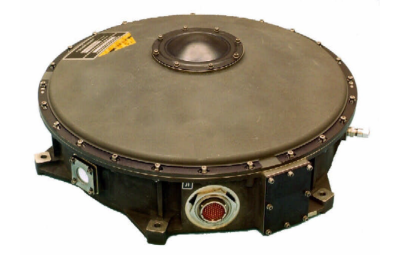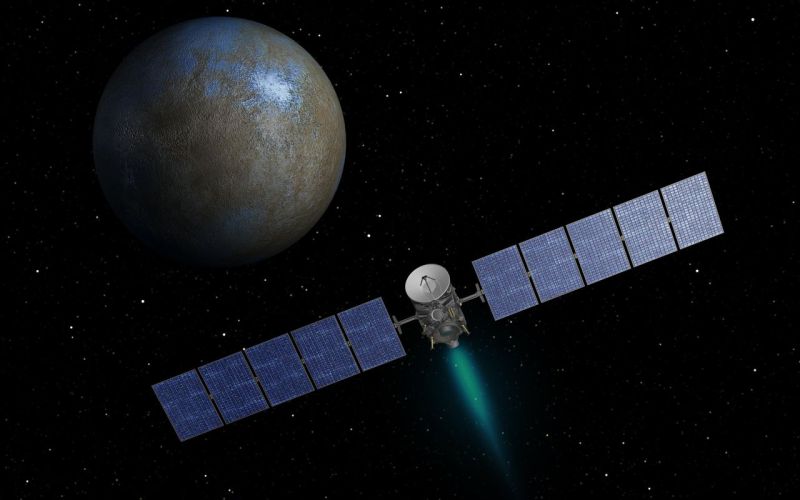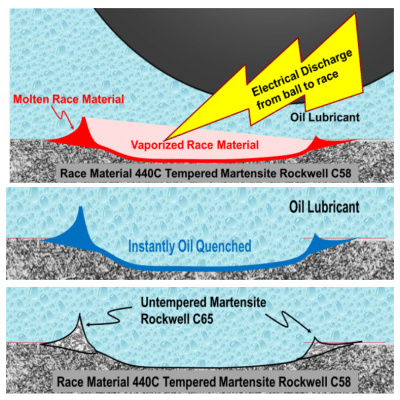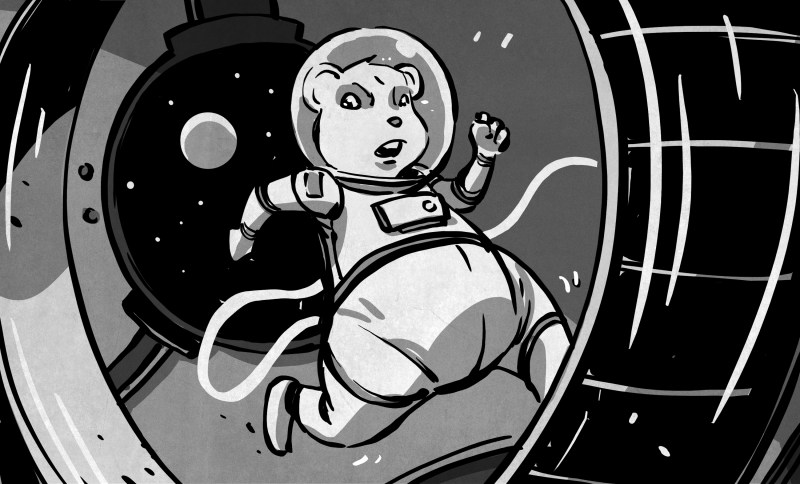Over the past few decades, numerous space probes sent to the far-flung reaches of the Solar System have fallen silent. These failures weren’t due to communications problems, probes flying into scientifically implausible anomalies, or little green men snatching up the robotic scouts we’ve sent out into the Solar System. No, these space probes have failed simply because engineers on Earth can’t point them. If you lose attitude control, you lose the ability to point a transmitter at Earth. If you’re managing a space telescope, losing the ability to point a spacecraft turns a valuable piece of scientific equipment into a worthless, spinning pile of junk.
The reasons for these failures is difficult to pin down, but now a few people have an idea. Failures of the Kepler, Dawn, Hayabusa, and FUSE space probes were due to failures of the reaction wheels in the spacecraft. These failures, in turn, were caused by space weather. Specifically, coronal mass ejections from the Sun. How did this research come about, and what does it mean for future missions to deep space?
What Is A Reaction Wheel?
A reaction wheel is important to any space mission: it’s the main method nearly every space probe uses to orient itself. It’s how a space telescope points at a star, and it’s how a Martian lander makes sure the heat shield is pointed towards the atmosphere before reentry. But how does it do this?

A reaction wheel is really just a flywheel — a heavy, spinning disk — that normally rotates at a few hundred to a few thousand RPM. This flywheel stores angular momentum, and changing this rotation speed imparts a tiny bit of torque around the axis of the flywheel. Think of it as a very advanced version of the infamous introduction to physics experiment where a volunteer sits on a spinny chair, holding a spinning bicycle wheel. The bicycle wheel stores angular momentum, and by tilting the wheel the volunteer can spin in their chair. No, it’s not a perfect representation of a reaction wheel, because the flywheels in a satellite don’t tilt, but the idea is the same: controlling a flywheel means you can spin. Do it on a satellite in microgravity, and you can spin the entire spacecraft.
Of course, reaction wheels aren’t the only way a spacecraft can orient itself. Satellites flying in Low Earth Orbit (or any magnetosphere, really), can use magnetorquers, or long electromagnets, to orient themselves within a magnetic field. The cubesats from several universities, in fact, use magnetotorquers for all their attitude control requirements. But magnetotorquers don’t work outside of a magnetosphere, and in deep space, space probes will also use thrusters in conjunction with reaction wheels. Using two methods of attitude control is a necessity for any deep space mission. Not only can one method fail, but reaction wheels can become ‘oversaturated’, or have the flywheel spin at the limits of its bearings. If this happens, the flywheel would need to be de-spun, which means thrusters must provide an opposing torque to keep the spacecraft from spinning out of control.
Despite these limitations, reaction wheels really are the best way to orient a small spacecraft. They only require electricity to keep them spinning, which is abundant thanks to solar panels. Using thrusters as the sole means of orientation uses valuable fuel, and the mass of that fuel would be better spent on sensors and experiments anyway.
Failures of Reaction Wheels
Reaction wheels are found in nearly every spacecraft, and over the last few decades there have been a few notable failures. The Hubble space telescope was suffering from failures of multiple reaction wheels before a servicing mission saved the space telescope in 1997. This was vitally important, because without a full suite of reaction wheels, the Hubble could not point at anything; an impressive failure for a telescope. Before the servicing mission, the problem was solved to an extent by using two of the remaining reaction wheels and magnetotorquers. With the replacement of the reaction wheels, Hubble happily continued exploring the cosmos.

Beyond Earth orbit, there have been numerous failures of reaction wheels in space. The Dawn mission to Vesta and Ceres is still continuing, but while this space probe was in orbit of Vesta, it suffered a loss of its reaction wheels. The cause of the failure was excessive friction in the bearings, and while engineers managed to get Dawn to Ceres, it wasn’t easy. A combination of the remaining reaction wheels and ion engines did allow Dawn to travel to Ceres, but it couldn’t even do that with its main antenna pointing at Earth.
In the summer of 2005, the Hayabusa spacecraft was cruising towards an asteroid named Itokawa, when a reaction wheel controlling its X axis failed. As Hayabusa had redundant reaction wheels, the mission continued towards the asteroid until September of 2005 when it assumed a 7 km orbit around its target asteroid. Just days after achieving this orbit, a second reaction wheel failed, this time controlling the Y axis. Despite this, Hayabusa landed on Itokawa momentarily, collected a small sample, and returned to Earth, sending a recovery capsule to land in the Australian desert.
While not launched into deep space, the FUSE spacecraft — the Far Ultraviolet Spectroscopic Explorer — was launched into orbit in 1999, and designed as a telescope for the far ultraviolet portion of the spectrum. This satellite was launched into a 760 km orbit around Earth (still close enough that magnetotorquers were also used in the design). After several years, two of the four reaction wheels showed a sudden increase in friction and stopped spinning. Engineers managed to update the software to use the two remaining wheels and magnetotorquers, allowing the mission to continue for several years but in 2007, the last two wheels failed, bringing an end to the mission.
But perhaps the greatest failure of reaction wheels in space is that of the Kepler spacecraft. This spacecraft was designed to sit in deep space and look at a small speck of the cosmos for planets passing in front of stars. If there was ever a mission that required accurate pointing and redundant reaction wheels, Kepler is it. Launched in 2009, the planet-finding mission was at first expected to last until 2016. This changed in the summer of 2012, when one of the four reaction wheels failed. Less than a year later, a second reaction wheel failed, causing the cancellation of the primary mission.
While the Dawn, Hayabusa, FUSE, and Kepler missions were saved by Apollo 13-level engineering heroics, all of these missions have another thing in common. The reaction wheels were all manufactured by Ithaco Space Systems. Sounds like a great opportunity for a root cause analysis, doesn’t it?
Finding The Failures In Reaction Wheels
Simply due to their nature as space probes, we’ll probably never recover the reaction wheels from Dawn or Kepler. The reaction wheels from Hayabusa were a fine mist over the Australian desert before they weren’t anymore. So, how do we figure out how these reaction wheels failed? That’s exactly what one researcher did, and the evidence is intriguing.
 The failures of these reaction wheels can be traced to one problem: friction in the bearings which allow these flywheels to spin at thousands of rotations per minute. When the motor inside the reaction wheel can’t overcome the friction of the bearings, the reaction wheel has failed. But what would cause this in deep space, millions of miles away from Earth?
The failures of these reaction wheels can be traced to one problem: friction in the bearings which allow these flywheels to spin at thousands of rotations per minute. When the motor inside the reaction wheel can’t overcome the friction of the bearings, the reaction wheel has failed. But what would cause this in deep space, millions of miles away from Earth?
As it turns out, the failures of reaction wheels, specifically on the FUSE and Kepler missions, was correlated with space weather, specifically coronal mass ejections (CMEs) from the Sun. These CMEs induce a voltage across the bearings and the bearing races in the reaction wheels, and after testing, these researchers discovered it doesn’t take much to generate a small arc from the bearing to the bearing race. This arc causes a small bit of pitting, which over time increases the friction on the reaction wheels, eventually causing it to fail.
Solving Bearing Friction Failure
While the researchers provide the experimental data showing that bearings can fail due to a voltage across a bearing and a race, it’s unlikely we’ll ever be able to prove Kepler, FUSE, or Dawn suffered a reaction wheel failure because of space weather. To recover these space probes for an inspection of the bearing races we need to wait for the development of impulse drives or space pirates on a salvage mission.
The good news is the failures of these reaction wheels may be in the past. Ithaco Space Systems has since changed from metal ball bearings to ceramic bearings in their reaction wheels, greatly reducing the chance of arcing across the bearing races. While we might never know for sure if these reaction wheels failed due to space weather, the problem, at least in these Ithaco reaction wheels, is solved.
















Oh, ha, took me a while to understand the illustration. (c:
“…changed from metal ball bearings to ceramic bearings…” I’m sure they’ve tested for it, I’m just curious, doesn’t ceramic become brittle at really low temperatures?
Yeah, it took me a moment to get the illustration too!
But, kudos to Mr. Kim anyway!
Lots of machines have a hard time at very low temperatures. luckily, it’s difficult for an active spacecraft to get cold. Usually they need specially designed radiators to dispose of excess heat. Because even though space is very cold, there’s no conduction or convection to carry heat away. It’s like the largest possible thermos bottle.
Scott Manley covered this a few weeks ago:
https://www.youtube.com/watch?v=KibT-PEMHUU
I actually happened to watch the video right after he published it. I don’t usually care much for space-stuff, but something about this video just caught my eye and I feel like Scott Manley did a very good job of presenting it all.
Scott manley’s word on this: https://www.youtube.com/watch?v=KibT-PEMHUU
Magnetic bearings?
I was having the same thought. I have always been fascinated by how friction free they are and often wondered why they were not more popular.
One has to wonder how those would be affected by space weather…
Whether they could be affected by space weather
FTFY
B^)
I worked at a front end shop for a few years, the guy who owned it had been doing that work for a long time.
His theory on why the front wheel bearing hub assemblies failed on just one side was because of static electricity. A broken ground strap on the vehicle did not allow the static electricity to go where it had been designed to go, with the strap broken the static electricity went through the hub/bearing on it’s path to escape & that trashed the bearing before it’s time.
The Chevy Chevette had the same problem with the starter assembly failing. Apparently, the starter mount allowed vibration and the vibration cause the starter to rotate, which generated a voltage. Solved with a ground strap.
SORCE also lost some wheels from Ithaco, FWIW.
this’ll be probably the third theory i heard for why those wheels were failing. (first one was that one orientation of some washers was “Good” and the other orientation was “Bad” and that Ithaco hadn’t known which was which. that one lasted a year or two? i think.)
I wonder if they could somehow make the oil conductive. Perhaps adding something like graphite, (yes, I know it’s not a good bearing lubricant, but you get the idea), would give the oil enough conductivity to prevent arcing.
Ceramic bearings are one solution, but they worry me. They fail abruptly and catastrophically – one ball breaks, and the rest immediately follow, leaving a lot of slop and wobble on the axle of a massive fast-spinning wheel. Steel bearings tend to fail slowly and gracefully – the bearing may seize, but the balls are usually still in place to hold the bearing together. With ceramic, I’d be afraid of the flywheel tearing itself apart and causing collateral damage.
If you make the lubricant conductive there’ll be electrolysis and compounds formed from the voltage potential. using an insulator as a bearing is an ideal solution, though there would still need to be a ground point to prevent charge building. as long as the separation between the grounding points was less than the width of the bearing that should be safe though. I’ve worn out many wheel bearings, some hubs are designed to prevent the axle nut scoring the hub, other hubs necessitate a new hub every time the bearing fails, others lose the entire wheel and hub. it’s perfectly possible for a hub design to fail safe.
All good points – thanks. As soon as you mentioned electrolysis, a voice inside my head went ‘Doh!’ Now I’m wondering if it would be possible to add a slipring to the design, (or some equivalent), to electrically connect the outer and inner races. The potential for saving the bearings might be worth the additional drag.
bob says: “If you make the lubricant conductive there’ll be electrolysis …”
In a word: no. Maybe if you use an ionic solution like salt water as a lubricant. There are lots of lubricants that are conductive, specifically for this purpose of reducing static. Most are either silver or carbon based. Neither of those will promote electrolysis if current is passed through them.
It seems that a magnetic bearing solution might be possible, but it would be much more complex. It could be done either actively using precious power to keep it stable or diamagneticly which would add a lot of extra weight to the system.
X ray tubes used in clinical service use a rapidly-spinning heavy anode, not unlike a reaction wheel. Yet they carry up to an amp of current from that anode, through the bearing. Since that bearing must operate in a very high vacuum over a very wide temperature range, liquid lubricants can’t be used. Instead they use metallic silver that is both the lubricant and the electrical conductor.
Silver is a reliable, proven lubricant method. I have a tube not far from my desk that’s been in service for over 30 years, accumulating over 10 billion revolutions, and shows no signs of failing yet.
This isn’t even rocket science.
I just looked up another tube we use: it’s younger, but used much, much harder. It has accumulated 200 trillion (2E11) revolutions, with zero maintenance.
Must be if none of the vehicles mentioned used them.
Good point, I actually have a couple of rotating anode x ray tubes someplace in the archives. I never really thought much about the bearings. I may go see if I can find one and have a look see.
I had an ex that almost got a job at Ithaco. This would have been around 1988 or so. She was all set to be hired and they had some kind of a sanfu and lost a lot of business. She was laid off before she started.
This article was a lot more interesting than I had assumed. I feel like the title was a poor choice because it didn’t convey that there was a workable theory to be discussed, or for that matter, that the problem has apparently been solved.
Falling cats can wriggle and spin their tail to reorient themselves. You would think the right twisting motion of some componant designed for that could move even a probe from one stationary orientation to another one using minimal energy and no propellant. It would be pretty impressive if it could be done precisely too like what I would expect to be possible with flywheels. Of course the flywheels contribute to the probe’s stability even after it is oriented correctly, a feature that just “wriggling” would not provide.
The problem is that the cat has lost the use of its tail. The satellites can still wiggle, just not on all 3 axes.
“…lost the use of its tail”. I love the analogy. Hate cats, but love the analogy.
This is what I’m talking about. Destin from YouTube’s “Smarter Every Day” beat me to the punch asking a very similar question and got some help from the people in the International Space Station to get an answer. Unlike cats, most astronauts don’t have tails and yet they seem to be able to wriggle themselves into any desirable orientation without touching anything. I really think it is about bending, twisting, and then bending back and ending up pointing a different direction. It seems to me that a couple servos controlling the angles of a U-joint with a weight sticking out from it and a motor turning the whole assembly could cause orientation change for any attached device.
https://www.youtube.com/watch?v=VJcno_XL4RU
And his cat dropping video…
https://www.youtube.com/watch?v=RtWbpyjJqrU
even assuming that’s possible (maybe? dunno), spacecraft frequently need to not just move from orientation A to orientation B, but they need to do so with some significant constraints on the intermediate positions. (from memory for a couple of missions: can’t aim the sensors at the sun; can’t aim the star trackers at the sun; can’t aim one star at the sun and the other at the earth; have to keep the solar panels between the sun and the spacecraft; have to keep the sensor aimed at the sun; etc etc)
Sounds like the words of a telescope owner. :-) I think the increment of change and direction are controllable. The cat bends itself in half and makes extreme motions to get turned around ASAP, but smaller motions involving a smaller percentage of the probe’s mass would have smaller effects. Not enough?…just keep doing it until you are done. A probe in space has a lot more time to work with than a falling cat. Basically you are borrowing a bit of angular momentum from yourself, letting yourself turn and then give it back and you stop turning and are at a new orientation. Actually its not that different from charging up and then discharging a flywheel. My guess is that flywheels are still the way to go although I’d love to see them use magnetic bearings. If the probe was out where it was cold enough, superfluids would be interesting. I wonder if a superfluid flowing in a circle has a gyroscopic effect. If I were a betting man I’d say no, but I’m not sure. There would be no bearings to wear out in that context.
We’re talking reaction wheels here, not flywheels, not gyros (and not momentum wheels either). They all look similar, being a spinning mass on an axle, but the mode of operation is entirely different.
There must be a term (I was using the term flywheel) that inclusively describes all of the devices you just mentioned. Masses spinning on an axis all absorbing, giving out, and storing angular momentum at times. What’s your favorite word for the group? I
I suppose you could call them “spinning lump of something on a stick”, but people might understand you better if you use the term appropriate for the application. You’ll get funny looks from your mechanic if you call your car engine’s flywheel a reaction wheel. Likewise, a satellite engineer won’t take you seriously if you call a reaction wheel a flywheel.
Agreed. It looks like we’re both at a loss at finding a more general term. Your spot on with the professional/nomenclature statement. Mechanics..Satellite Engineer.. then there’s me where I have dabbled in teaching physics, so naturally the word flywheel makes the most sense. I think we all are victims of people’s natural desire to argue about terms, but I still wish there was an acceptable “umbrella” term. … you can sit in a swivle chair and spin an umbrella and then close it up and …. :-)
“I suppose you could call them “spinning lump of something on a stick”,”
I can see it now…
Next year’s Minnesota State Fair will have a new item for the food vendors to sell to the public!
foxpup sez: ” twisting motion of some componant designed for that could move even a probe from one stationary orientation to another one using minimal energy and no propellant.”
Funny enough, that is precisely what a reaction wheel does. With one moving part and one degree of freedom (per axis), and you get orientation stationkeeping for free too. Which, uh, is the whole point.
Though the notion of a satellite gyrating around its hips to point somewhere is amusing. You’d have to call it ELVIS. Somebody more clever than me can come up with the words for that acronym.
ELVIS!!! I love it. Actually your point about the flywheel doing the same thing is well taken. Its more of a point of what kind of mechanical device to you want to use to do the gyrating. Some will be more reliable, lighter, and controllable than others. If some component of the machine is already capable of “wiggling the hips” another device may not be necessary. (camera on a motorized gimble?) That said, the continuous spinning of gyroscopes adds stability too and I’m sure that would be valuable.
ELVIS
Elevation and Latitude Vector Inclination Stabilizer
I’ll see my way out now…
Sounds similar to brinelling. Although, the microarcing probably helped to make matters worse. I wonder if a supercap couldn’t be installed to accumulate the charges and radiate it through a coil.
In old VCRs spinning head assembly there was central contact to keep the head at the GND potential. I also saw that military gyroscopes had the spinning mass also grounded by special spring-loaded contact. So it seems the effect was known long time ago.